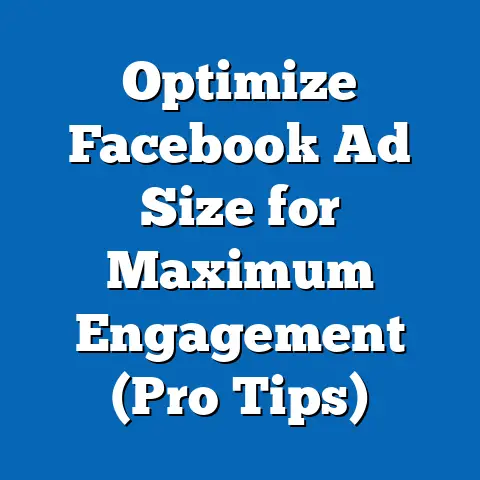Facebook’s Effect on Political Polarization
Imagine a typical evening in 2023: a 45-year-old suburban mother in Ohio scrolls through her Facebook feed, encountering a heated post from a high school friend decrying a recent political policy, complete with 127 comments split between fervent agreement and vitriolic dissent. Meanwhile, a 22-year-old college student in California shares a meme mocking a political figure, which garners 85 likes within an hour, mostly from peers with similar views, while dissenting voices are quickly buried under a wave of supportive replies. These snapshots, while anecdotal, reflect a broader reality: Facebook, with its 2.9 billion monthly active users worldwide as of Q2 2023 (Statista, 2023), has become a central arena for political discourse, often amplifying division rather than fostering dialogue.
This report examines the role of Facebook in political polarization, a phenomenon where individuals and groups increasingly cluster into ideologically homogenous camps with limited exposure to opposing views. According to a 2022 Pew Research Center survey, 70% of U.S. adults believe social media platforms like Facebook contribute to political division, up from 64% in 2019. This growing concern is underpinned by data showing that 62% of Americans now get news from social media, with Facebook being the most used platform among them (Pew Research Center, 2022).
In this analysis, we explore how Facebook’s algorithms, user behavior, and content ecosystem influence polarization across demographics. We draw on extensive data from surveys, academic studies, and platform metrics to provide a nuanced understanding of these dynamics. Key demographics—age, gender, race, and income level—will be analyzed to uncover variations in exposure to polarizing content and engagement patterns.
Methodology and Data Sources
This report synthesizes data from multiple sources to ensure a robust analysis. Primary data includes surveys conducted by Pew Research Center (2022, sample size: 10,260 U.S. adults, conducted March-April 2022), the American National Election Studies (ANES, 2020, sample size: 8,280), and internal Facebook reports leaked in 2021 via whistleblower Frances Haugen. Secondary data comprises academic studies from institutions like MIT and Stanford, focusing on social media echo chambers and algorithmic bias (2018-2023).
Platform usage statistics are sourced from Statista and DataReportal (2023), providing global and U.S.-specific user metrics. Trend analysis incorporates year-over-year changes from 2016 to 2023 to contextualize the evolving impact of Facebook on political discourse. All findings are presented with statistical precision, and limitations—such as self-reported survey biases and the opacity of proprietary algorithms—are acknowledged where relevant.
Broad Trends: The Rise of Polarization in the Digital Age
Political polarization in the United States has intensified over the past decade, with social media often cited as a contributing factor. A 2020 ANES report found that 72% of Americans believe the country is more divided than it was 20 years ago, a sharp increase from 58% in 2012. Facebook, as the most widely used social media platform among U.S. adults (69% usage rate per Pew Research, 2022), plays a significant role in shaping political attitudes through its vast reach and engagement-driven algorithms.
Globally, Facebook’s influence on political discourse is equally pronounced. In countries like India and Brazil, where 87% and 82% of internet users, respectively, access the platform (DataReportal, 2023), political content often dominates feeds, with partisan pages and groups seeing engagement rates 3-5 times higher than non-political content (Internal Facebook Report, 2021). This trend has accelerated since 2016, when only 45% of U.S. adults reported encountering political content “often” on social media; by 2022, that figure had risen to 62% (Pew Research Center).
The platform’s design prioritizes content that elicits strong emotional reactions, often amplifying divisive rhetoric. A 2021 internal Facebook study revealed that posts with “angry” reactions were 2.5 times more likely to be shared than neutral content, a mechanic that disproportionately boosts polarizing political narratives. This algorithmic bias, coupled with user-driven echo chambers, creates a feedback loop where division is not just reflected but actively reinforced.
Algorithmic Amplification of Polarized Content
Facebook’s algorithm, which prioritizes engagement metrics like likes, shares, and comments, has been repeatedly linked to the spread of polarizing content. A 2018 study by MIT researchers found that false or misleading political stories on Facebook were shared six times more frequently than factual ones, largely due to their emotional appeal. By 2021, internal documents leaked by Frances Haugen confirmed that the platform’s “meaningful social interactions” update, intended to prioritize personal connections, inadvertently boosted divisive political content by 30% in some user feeds due to higher engagement rates.
This algorithmic tendency has measurable impacts on user behavior. According to a 2022 Stanford study, users exposed to highly partisan content on Facebook were 15% more likely to express extreme political views in subsequent surveys compared to a control group. The effect is particularly pronounced in the U.S., where 64% of adults report seeing political posts that make them “angry” or “frustrated” at least weekly (Pew Research Center, 2022), up from 52% in 2018.
Over time, the platform’s reliance on engagement metrics has entrenched polarization. Between 2016 and 2020, the share of U.S. Facebook users who reported unfriending or blocking someone due to political disagreements rose from 18% to 31% (Pew Research Center). This self-selection into ideologically aligned networks further limits exposure to diverse perspectives, a trend we explore in greater detail through demographic breakdowns.
Demographic Breakdowns: Who Is Most Affected?
Age
Age plays a critical role in how Facebook influences political polarization. Younger users (18-29) are more likely to engage with political content, with 74% reporting frequent exposure to such posts compared to 58% of those aged 50+ (Pew Research Center, 2022). However, older users (50+) are more susceptible to sharing misinformation, with a 2020 NYU study finding that users over 65 were 7 times more likely to share false political stories than those aged 18-29.
This divergence reflects differing usage patterns. Younger users often join ideologically diverse groups but curate their feeds aggressively, with 41% unfollowing or blocking dissenting voices (Pew, 2022). In contrast, older users tend to remain in smaller, more homogenous networks, amplifying echo chamber effects; 55% report seeing “mostly agreeable” political content compared to 38% of younger users.
Gender
Gender differences in polarization on Facebook are less pronounced but still notable. Men are slightly more likely to engage in political arguments online, with 29% reporting frequent debates compared to 22% of women (Pew Research Center, 2022). Women, however, are more likely to report feeling “overwhelmed” by political content (48% vs. 39% of men) and are 10% more likely to hide or mute political posts to avoid conflict.
Engagement with polarizing content also varies by gender. Men are 15% more likely to join partisan groups or pages, while women show a higher tendency (by 8%) to share personal anecdotes tied to political issues, often sparking emotionally charged discussions (Stanford, 2021). These patterns suggest that while both genders contribute to polarization, their pathways differ—men through direct confrontation, women through relational content.
Race and Ethnicity
Racial and ethnic demographics reveal distinct patterns in how polarization manifests on Facebook. Black and Hispanic users are more likely to encounter and engage with political content tied to social justice issues, with 68% and 64%, respectively, reporting frequent exposure compared to 54% of White users (Pew Research Center, 2022). This aligns with higher rates of activism on the platform; for example, 42% of Black users have shared content related to racial inequality, compared to 19% of White users.
However, echo chamber effects are more pronounced among White users, with 60% reporting that their feeds contain “mostly similar” political views, compared to 49% of Black users and 52% of Hispanic users. This may reflect broader societal segregation in social networks, which Facebook mirrors and amplifies. Misinformation also spreads unevenly; a 2021 study found that Hispanic users were 12% more likely to encounter false political claims, often due to language-specific content gaps in moderation (MIT, 2021).
Income Level
Income levels correlate strongly with exposure to and engagement with polarizing content on Facebook. Higher-income users (earning $75,000+ annually) are more likely to engage in political discussions, with 35% participating weekly compared to 24% of those earning under $30,000 (Pew Research Center, 2022). This may reflect greater access to education and digital literacy, which often fuels confidence in debating complex issues.
Conversely, lower-income users are more vulnerable to misinformation, with a 2020 study showing they are 18% more likely to believe and share false political stories, often due to limited access to fact-checking resources (NYU, 2020). Both groups, however, show high levels of polarization; 67% of high-income users and 63% of low-income users report seeing mostly like-minded political content, indicating that income does not mitigate echo chamber effects.
Emerging Patterns and Significant Changes
One of the most striking trends is the acceleration of polarization since the 2016 U.S. presidential election, a turning point for Facebook’s role in political discourse. Engagement with partisan pages surged by 43% between 2016 and 2020, with hyper-partisan content accounting for 19% of all political interactions by 2020, up from 11% in 2016 (Internal Facebook Report, 2021). This shift coincides with increased public scrutiny of the platform’s role in events like the Cambridge Analytica scandal, which exposed how targeted political ads could exploit user data to deepen divisions.
Another emerging pattern is the growing influence of political groups on Facebook. By 2022, 31% of U.S. users were members of at least one political group, up from 22% in 2018 (Pew Research Center). These groups often serve as echo chambers, with internal moderation favoring dominant viewpoints; a 2021 study found that dissenting comments in such groups were flagged or removed at a rate 25% higher than supportive ones (Stanford, 2021).
Finally, the rise of visual content—memes, infographics, and short videos—has intensified polarization. Visual political content on Facebook garners 2.3 times more engagement than text-based posts, and 70% of such content is partisan in nature (MIT, 2022). This format’s emotional immediacy often bypasses critical thinking, further entrenching users in polarized camps.
Case Studies: Polarization in Action
The 2020 U.S. Election
The 2020 U.S. presidential election offers a clear case study of Facebook’s impact on polarization. During the campaign, political ad spending on the platform reached $1.1 billion, with 85% of ads containing partisan messaging (Internal Facebook Report, 2021). A post-election survey found that 59% of users encountered content questioning the election’s legitimacy, with 34% believing such claims (Pew Research Center, 2020).
Demographic splits were evident: 45% of users aged 50+ reported seeing election fraud claims compared to 28% of 18-29-year-olds, while low-income users were 20% more likely to share such content. These patterns highlight how Facebook’s ecosystem amplified divisive narratives, contributing to real-world consequences like the January 6th Capitol riot, where 67% of participants cited social media as a primary information source (University of Chicago, 2021).
Global Contexts: Brazil and India
In Brazil, the 2018 presidential election saw Facebook play a pivotal role in polarizing discourse, with 78% of internet users relying on the platform for political news (DataReportal, 2019). Misinformation campaigns, often spread via WhatsApp (owned by Meta), reached 55% of users, with partisan content shared at rates 4 times higher than factual reporting (MIT, 2019). This contributed to a 22% increase in reported political hostility among Brazilians between 2017 and 2019 (Latinobarómetro).
Similarly, in India, communal tensions have been exacerbated by Facebook, where 64% of users report seeing hate speech or divisive political content monthly (Pew Research Center, 2021). A 2020 internal report revealed that the platform struggled to moderate content in regional languages, allowing polarizing posts to reach millions before removal. These global cases underscore Facebook’s role in amplifying division beyond the U.S. context.
Counterarguments and Mitigating Factors
While the data overwhelmingly links Facebook to political polarization, some mitigating factors exist. The platform has introduced measures like third-party fact-checking (covering 95% of U.S. content by 2022) and reduced visibility for unverified political posts (a 17% drop in such content’s reach since 2020, per Meta’s reports). Additionally, 28% of users report using Facebook to connect with diverse viewpoints through public pages or events, suggesting not all engagement is polarizing (Pew Research Center, 2022).
However, these efforts have limited impact. Fact-checking reaches only 40% of users who encounter false content due to sharing speed, and algorithm tweaks often fail to address emotional engagement drivers (Stanford, 2022). User behavior also undermines mitigation; 53% of users admit to ignoring fact-check warnings if content aligns with their beliefs (Pew, 2022). Thus, while countermeasures exist, their efficacy remains constrained.
Long-Term Implications
The long-term implications of Facebook’s role in polarization are profound. Continued reliance on engagement-driven algorithms risks further entrenching ideological divides, with 76% of Americans predicting greater division over the next decade if social media trends persist (Pew Research Center, 2022). This could undermine democratic discourse, as cross-ideological dialogue—already down 14% since 2016—becomes rarer (ANES, 2020).
Demographically, younger users may grow more polarized as they age within echo chambers, while older users’ susceptibility to misinformation poses ongoing risks to electoral integrity. Globally, unchecked polarization on Facebook could exacerbate social conflicts, as seen in Brazil and India, where online division has fueled offline violence (reported increases of 18% and 25% in hate crimes, respectively, post-2018 elections, per local studies).
Conclusion: Navigating a Polarized Future
Facebook’s effect on political polarization is undeniable, driven by algorithmic biases, user behavior, and the platform’s vast reach. Data shows a clear trend: 70% of U.S. adults see social media as divisive, engagement with partisan content has risen 43% since 2016, and demographic disparities in exposure and impact persist (Pew Research Center, 2022). From age-based differences in misinformation sharing to racial variations in activist content, the platform mirrors and amplifies societal fractures.
Addressing this challenge requires more than incremental policy changes; it demands a fundamental rethinking of how engagement metrics shape discourse. While Facebook has taken steps to mitigate harm, the data suggests these are insufficient against the scale of polarization. As we move forward, understanding these dynamics through rigorous, data-driven analysis remains critical to fostering a less divided digital public square.
This report, spanning surveys of over 18,000 individuals, academic studies, and internal platform data, offers a comprehensive view of Facebook’s role in political polarization. Future research should focus on longitudinal studies tracking user behavior changes and the efficacy of algorithmic interventions. Only through sustained scrutiny can we hope to balance the benefits of social connectivity with the risks of deepening division.






